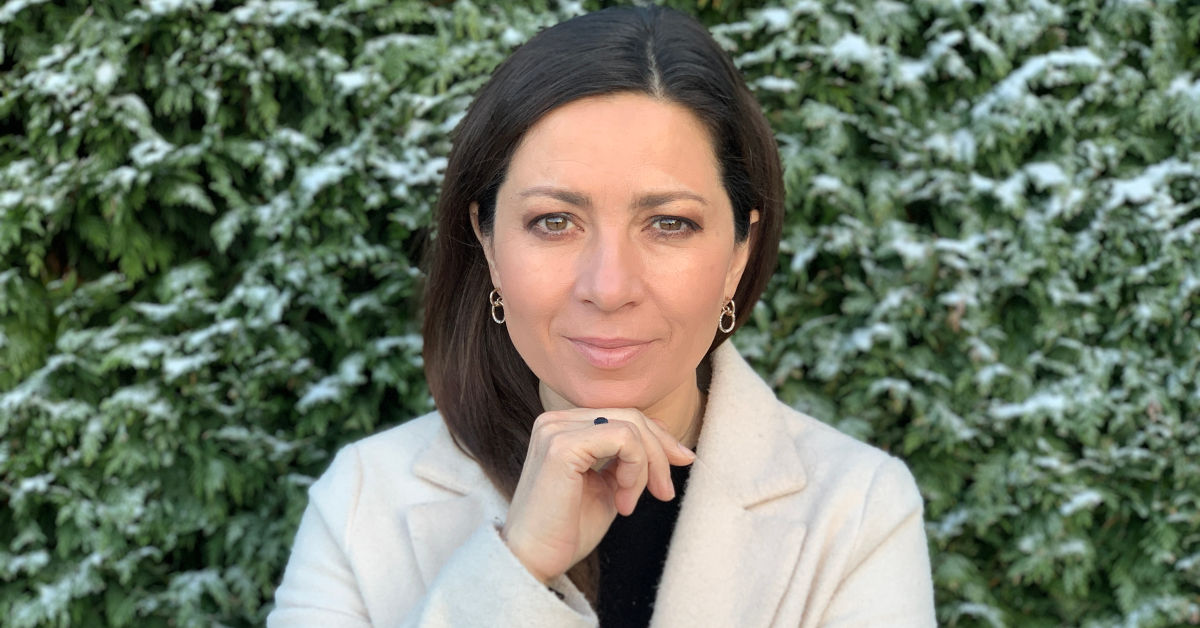We trust you’re enjoying the serialisation of our Report and Accounts.
In episode three, our amazing Patron, esteemed meteorologist and TV weather forecaster, Clare Nasir, puts the science in perspective and explains why Word Forest’s mission is so vital for the health and wellbeing of our planet.
If you missed either of the previous articles in this series, visit WordForest.org/news and read them or have them read to you.
Heed the Climate Science
I believe we are in the early years of what will inevitably be noted by historians as ‘the most crucial decade for ensuring human survival on planet Earth’.
The one where internationally gathered data and great science was woven into a globally adhered-to policy that had the power to move the planet’s trajectory away from erasing life on earth for humans and wildlife. It might take a while for it to gain governmental consensus but on the back of what meteorologists are seeing and predicting today, I remain optimistic it will happen.
A Phoenix will Rise
Death tolls from active forest fires raging across the globe are increasing and species decline of everything from miniscule insects to gargantuan whales, is at an all time high. This is a bone-chilling fact, not conjecture or speculation.
Our outlook is horrifically bleak, there’s no doubt about it and yet the voices of incredibly knowledgeable climate scientists are only just beginning to rise above those filled with rhetoric and inexcusable excuses for not guiding our planet towards Net Zero.
Word Forest’s Solution
While Rome quite literally burns, my gratitude is offered up to Word Forest for the ambitious, multi-faceted mission they’ve undertaken to combat our climate emergency by reforesting Kenya.
Trees there have the ability to grow incredibly fast, up to 10 times quicker than elsewhere and in a country that has around 10% canopy cover, that leaves a huge amount of space to green up, drawdown and lock in CO2.
I accepted the responsibility to be Word Forest’s Patron in December 2020 because I believed they had the right blueprint for all life on Earth. By combining tree planting, environmental education and critically, a raft of women’s empowerment initiatives, they have the ability to get the job done, regardless of who walks the political corridors.
The Power of Partnerships
With the right finance streams unlocked – which I’m confident will happen, as they enter the carbon offset market with assistance from Oaklin and other Corporate Partners – Word Forest will at last be able to scale up their operation. Everything is aligning for them to become the multi-million pound NGO they deserve to be.
Word Forest will be able to engage more Mothers of the Forest across Kenya. They in turn will be able to mitigate hunger, malnutrition and starvation because they’ll understand the solutions that lie in organic growing, permaculture and syntropic agroforestry. They’ll be able to put a dent in poverty too because they’ll be armed with solutions for income generation and they’ll be able to work with whatever Mother Nature throws at them. The Mothers will ensure their communities are more self-sufficient and Kenya will become a trailblazing country that inspires other African nations to follow their lead.
Green Fingers
We folks in the northern latitudes will do well to pay attention to the actions of the Mothers. Regardless of whatever jobs we think we do, we will benefit from learning how to grow a few comestibles for our dining tables. Let’s also do more to understand how food arrives on our plates. Learn what eating seasonally really means and comprehend the consequences of excessive road miles. Let’s supplement our dinner plates with fruits, vegetables, nuts, herbs and more from our gardens, allotments and window boxes.
Let’s be Mothers and Fathers of all the world’s forests by implementing Word Forest’s pioneering initiatives in our home countries. As Kate Winslet said, #TreesAreTheKey to mitigating climate chaos and so much more.
Add Pests to the Mix
I often think about the biblical ‘plague’ of locusts that annihilated thousands of hectares of farmland across the Horn of Africa in 2019. It was one of two waves, the first destroying 70,000ha of farmland in Somalia and Ethiopia, and 240,000ha of pastureland in Kenya. A second wave hit Uganda and South Sudan. It was the worst outbreak in decades.
Naturally, Word Forest responded immediately to the news of the swarms by declaring that all future food growing plots were to be covered in insect and shading nets. This has given them extra costs which they’ve taken on the chin. However, it is far better to anticipate the next inevitable swarm and to protect the food in situ, than to have to rely on emergency aid, which can take a very long time to deliver.
There are ways of stopping such extreme outbreaks and it starts by identifying breeding grounds. This is where satellite data is so important.
Ground Zero
Endeavours can be made to prevent extreme outbreaks from starting in the first place. Satellite data is a vital tool for identifying locust breeding grounds, as are early warning systems that use algorithms, mapping and ground information. Remote sensing from space provides weather, climate and environmental observations, such as vegetation indices and humidity values. It’s the bigger picture that’s needed, along with past and present imagery.
The EUMETSAT provides 16 megabits of data per second via its EUMETCast system to African meteorological services, climate researchers and other institutions. The satellite in geostationary orbit has had a continuous view of the continent for 40 years.
Meteorological Matters
Erratic rainfall patterns across Africa also continue to bring a whole host of other life threatening risks and impacts to agriculture, food and water security. It’s not only severe storms, droughts and floods, but their frequency and intensity are also on the increase and that can potentially cause major population shifts. Accurate weather forecasts and warnings of severe weather are essential to enable African countries to deal with and adapt to, the impacts of the changing climate.
Shiny New Satellite
Meteorological satellites have a key role to play too. In December 2022, a new payload of instruments was launched into space, including the first ever satellite instrument continuously detecting lightning over Europe and Africa. This promises a breakthrough for the detection and prediction of severe storms and this wasn’t the only satellite launched that year: it’s worthy of note that near space is actually getting very crowded.
Our Fragile Space
Recently, I had the privilege of interviewing astronomer and photographer Max Alexander at the Blue Dot Festival in Jodrell Bank, Cheshire. Max’s latest exhibition, Our Fragile Space, is part of a proactive initiative led by the UK and European Parliament to manage and regulate the exponential increase in human launched space debris.
The festival wanted a discussion on how we can learn from the mistakes, ignorance, policy weaknesses and general laissez-faire attitude when dealing with the global climate crisis here on Earth. So what’s the problem? Of the current 33,000 tracked objects in near space only 7,700 are functioning satellites. In addition to the current 100,000 satellite licences granted, there are another million pending approval.
Critical Kit
As a meteorologist, my day begins by studying the latest set of satellite pictures. The swirls of clouds, in every hue from white to grey to black, reveal a plethora of information for the day’s forecasting analysis. This, and so much more, is ingested into computer models to deliver short term output and longer term climate trends. My colleagues and I take this information for granted; it’s an integral tool that we live and breathe by.
The images in Max’s exhibition map the positives and negatives of using near space. I could write an essay on the uses, from monitoring retreating ice sheets, to understanding the level of heat absorbed by oceans and seas, the extent of wildfires, hints of reforestation, decline of lakes, the list is endless and essential. Instead I will close with some positive words from Max and then Word Forest.
Lessons for a Better Future
When it comes to near space, we still have time. Many lessons have been learned from our environmental successes and failures. However, it will take a mindful, concerted effort from all parties around the world to bring order and regulation to the future shared use of space.
Meanwhile, back at grassroots here on Earth, I’d like to hand the final words in my address to Tracey West, Word Forest’s CEO.
“If we get on the right side of Mother Nature and treat our host planet with a little more respect, instead of squeezing it for every drop of natural resource (water and oil), it has great potential to heal itself. If we reach back and unlock pots of indigenous knowledge and combine that with modern day science and education, we’ll have a workable solution for reducing unnecessary death and destruction. Unfortunately, it relies on a bit of degrowth and an urgent reframing of the measurement of GDP: surely GDH (health/ happiness) is a far better metric?”
“If the simple logic behind #TreesAreTheKey sat at the heart of local, regional, national and international decision making and governance, we could depart the Anthropocene and enter the restorative period – the Regeneracene, if you will – that humankind is going to end up in, at some point in the future. I’d rather that be sooner than later. How about you?”





